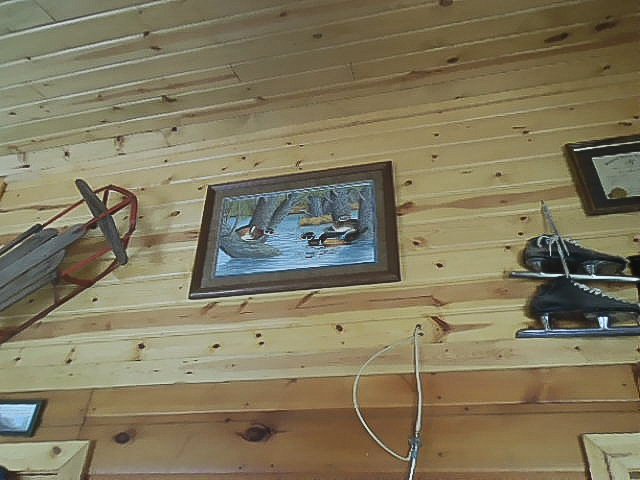
Image Credit: Marty Pfeif
A three-season cabin built in the 1940s became a year-round dwelling two years ago, but owner Marty Pfeif has discovered an alarming problem: a bumper crop of mold in the attic.
In a post at the Q&A forum, Pfeif ticks off the particulars, including no apparent attempts at air-sealing, “shake and rake” R-19 insulation on the attic floor and some batting against the walls, no vapor barrier, and a ridge vent but no gable vents.
In addition, he’s recently learned that an exhaust duct for the bathroom fan has fallen apart, allowing moist air to spill directly into the attic for the last couple of years.
“This week I found mold in the attic, and lots of it!” he writes.
“I’m spraying the mold with bleach, and have ordered RMR 80 mold remover,” Pfeif continues. “I have removed a 12×5-foot section of insulation, and I am in the process of air-sealing this section.”
When he’s done, he’d like to have a more usable space, either for storage or possibly for use a loft.
“The house is only 600 square feet,” he says. “It has vaulted ceilings everywhere but the bedroom and bathroom. I have no idea if mold is growing in this part of the roof. I plan to hire a new contractor, but this time I want to know what should be done, instead of blindly trusting that they will do the job correctly.”
Air leaks are the problem
The cause of the problem is no mystery to GBA senior editor Martin Holladay, who writes, “The most likely cause of the mold is air leaks in your ceiling. These air leaks allow humid interior air (conditioned air) to enter your attic. The moisture in the air condenses on cold attic surfaces, encouraging mold growth.”
The…
Weekly Newsletter
Get building science and energy efficiency advice, plus special offers, in your inbox.

This article is only available to GBA Prime Members
Sign up for a free trial and get instant access to this article as well as GBA’s complete library of premium articles and construction details.
Start Free TrialAlready a member? Log in














4 Comments
Great quote
By Andy Chappell-Dick: "A usable attic is a troubled attic"
Air Barrier for Attic
For my cabin, I'm going to be using engineered trusses and will have the attic insulation blown in. The ceiling is going to be T&G blue stain pine. Rather than installing and taping drywall before putting up the pine boards, what about just putting up some rigid foam board insulation and taping the joints? This lets me skip the drywall taping hassle (which I HATE doing) and provides the bonus of a little extra R-value.
Response to David Williams
David,
Taped rigid foam might work -- it's certainly a better air barrier than polyethylene or MemBrain. The main risk is foam shrinkage. For a discussion of foam shrinkage, see this article: Using Rigid Foam As a Water-Resistive Barrier. (Scroll down to find the section of the article you are interested in; you're looking for a subhead that reads, "Do rigid foam panels shrink?")
I'm conservative when it comes to ceiling air barriers, because leaky ceilings result in a lot of problems. I'd install taped drywall if I were you. You don't have to do a fancy job with the drywall tape -- just a quick, slapdash job with one layer of mud and the paper tape is all you need. There is no sanding involved.
Thanks for the link, Martin.
Thanks for the link, Martin. I was't aware of the shrinkage issue (unlike George Costanza). I'm hoping interior moisture issues are going to be minimized by using the Faswall block with a natural lime plaster interior finish and no vapor barrier in the walls. Plus south-central Montana is a DRY climate. But it sounds like drywall is the way to go. I'll just have to be extra careful with those angled joints in the vaulted ceiling (they always seem to split on me).
Log in or become a member to post a comment.
Sign up Log in